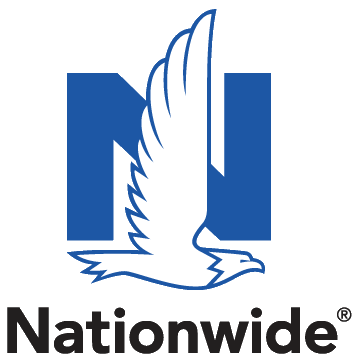The pandemic has upended traditional patterns of work, leisure, and home life. Crime—being opportunity-driven—is transforming alongside it.
Consequently, many businesses are finding it wise to re-calibrate their crime prevention efforts, recognizing that it is incumbent upon them to align security with changing crime environments and patterns. While always challenging, it’s a mission made easier when an organization can visualize risk in multiple ways and in terms that are most relevant to them.
New Patterns
In a study of crime in Chicago, researchers observed that COVID-19 has had unprecedented impacts on the security of society, economic development, people’s daily lives, as well as the distribution of crimes. Spatial and temporal patterns of crime have changed significantly, and new clusters of theft, battery, and burglary formed (“The Impact of COVID-19 on Crime: A Spatial Temporal Analysis in Chicago,” International Journal of Geo-Information, March 10, 2021).
Chicago is hardly alone, of course. Crime activity everywhere is shaped by where people go, when, and for what—and the pandemic has disrupted all of it. Targets of crime, too, have changed, with some businesses shuttered, many new ones emerging, and commercial and public spaces being re-purposed. Lastly, labor market churn is unprecedented, creating significant geographic shifts in employers’ labor pools.
Yes, business and society are now looking more like they once did, but experts believe that many features of today’s urban landscapes—born in the pandemic—are here to stay. Cities were compelled to decrease regulatory hurdles and allow more flexible uses of public and commercial spaces, for example—a “genie that will be hard to put back in the bottle,” according to study released in June by the National League of Cities’ (NLC) Center for City Solutions.
Decentralizing retail
Decentralized retail also gained in popularity, as work-from-home arrangements became commonplace. Many cities are re-shaping as a result, with businesses trying to “meet customers where they are,” according to the NLC’s report, The Future of Cities—Reenvisioning Retail. “The 15-minute city, in which most residents can meet their needs within a short walk or bike ride from their home, has been gaining traction.”
New Risk
Changing work-life patterns alter crime activity. They are also expected to transform basic aspects of many companies’ operations, such as from how far away its customers are likely to travel, how broad a geographic area they service, and from how large a geographic area they draw their employees.
All these factors suggest how a company might best view a location’s security risk. When crime is typically local and opportunistic, a narrow view may be best. If employees and customers are drawn from an extended geographic area, then a wider risk map offers another critical view.
Assessing Risk
Changes also reflect the need—if risk at a specific site is to be understood—of assessing demographic data, business statistics, and information on points-of-interest in a neighborhood that can amplify or mitigate the risk of crime.
CAP Index reports use analyze them all as part of scoring a site’s risk of experiencing crime events. “I don’t put all my eggs in one basket and will talk to colleagues and contacts and go out there and talk to neighbors, but it all starts with a CAP index report because it’s proved reliable and has buy-in through our leadership team,” said Michael Fessler, Senior Director for Enterprise Security Services at American Red Cross.
To meet the varying needs of businesses, CAP Index’s new Premium Plus Report includes four different scoring methodologies, each analyzing a progressively larger “sphere of influence” to assess the risk of crime. The varying methodologies account for the fact that perpetrators often travel varying distances to commit crimes depending on the target.
Each sphere is defined by a maximum geographic radius or a population threshold and have different components that influence the overall crime risk score. Scores tell the story of a location’s crime risk, and it is vital, validated crime risk intelligence, according to users.
“We do our own internal data review, but CAP Index gives the true neighborhood picture,” said Dan Yaross, Director of Security at Nationwide Children’s Hospital. “It provides credible data justification for security enhancements that we’re recommending for new construction or renovations of clinics.”
Pictures of Prevention
The CAP Index Scoring System uses sophisticated forecasting techniques to identify the overall risk of crime at a specific address. It also identifies 108 crime risk scores—for nine different offenses, three levels of geography and three time periods (past, current, and projected). “The data is very credible and speaks volumes in comparing crime data for that specific location against county, state, and national averages,” Yaross explained.
The system combines demographic and business statistics with crime and loss data to calculate crime risk, which is conveyed in understandable terms. “Once you understand the methodology, you can look [at a site’s scores] and in two minutes you’ve got an understanding,” said David Lafontaine, Director of Global Physical Security for Acuity Brands. “You know that the baseline is 100 and if risk is above or below that, and then you can identify your own personal threshold [score] for implementing security measures.”
IDENTIFY YOUR RISK SCORE DO MORE WITH YOUR SCORE
Cap Index Scores
Scores provide validated crime risk intelligence that empower businesses to make better operational and security decisions, and its value is maximized by mapping features that allow business and security leaders to visualize crime risk. A site-map view, for each “neighborhood” surrounding a given location, depicts the potential origin of criminal activity occurring at the location. The heat-map view calculates CAP Index Scores for every point on the map and colors are then shaded to indicate its corresponding risk level.
Experts say these map views can dramatically improve the understanding of crime risk and adds value to a data report. It helps clarify risk that otherwise might be missed or misunderstood, enables security teams to do more proactive planning, and facilitates resource allocation. “There absolutely is unique value in seeing things expressed visually,” according to Lorie Velarde, a geographic information systems analyst with the Irvine (Calif.) police department. “There are often patterns of things that cannot be understood unless you view them spatially.”
Provide your crime and loss data to see how CAP Index forecasting aligns with actual crime and loss incidents at your locations.

CAP Reports are critical to my risk assessments. They have enabled us to take a more surgical approach to investing in our stores that need it the most.
Brad Reeves
Senior Manager of Asset Protection
Five Below, Inc.

CAP Index is the first tool I turn to when time is of the essence. I can always depend on CAP Index to provide me qualified crime information within a very few minutes that I feel comfortable reviewing with the C-Suite.
Stephen A. Brown, CPP
Director, Corporate Security / Facility Security Officer
Burns & McDonnell

CAP Index data is a vital part of our security decision-making process.
Keith McGlen, CPP, CHPA
Associate Vice President
System Security Services
Memorial Hermann Health System

CRIMECAST® Reports have helped our organization for many years to proactively assess the particular risk for crime surrounding our facilities. The CAP Index® CRIMECSAST Platform is an easy-to-use online service that provides us with the flexibility to share and decentralize crime risk data within our North America business units.
Carlos J. Cortez,
Manager, Global Security Programs,
Kraft Foods, Inc. / Mondelez International

Our property selectors are not discouraged from a site just because it receives a high score. What we do is issue every store – all of them – a security classification. The classification determines how we allocate our security resources to that store.
Claude Verville,
Lowe’s

CAP Index's online platform, CRIMECAST, is great. It is easy to use and quick!
Ken Wieczorek,
Bank of America

In industries where there is high public contact and a customer is coming to our location (such as retail), why would you leave it to chance when planning security when there is an easy, affordable tool? When investing a million dollars on a location, what is this small charge compared to what it may cost you when you get sued?
Jay Beighley,
Nationwide Insurance

CAP Index assessments are a must for anyone engaged in asset protection. The new website is much improved and as important, easy to navigate.
Bruce List,
The Williams Companies

We have been using CAP Index for a few years and include it in our security vulnerability assessments. Highly recommend it.
Dan Yaross
Director, Protective Services
Nationwide Children's Hospital
 Sample CRIMECAST Reports
Sample CRIMECAST Reports